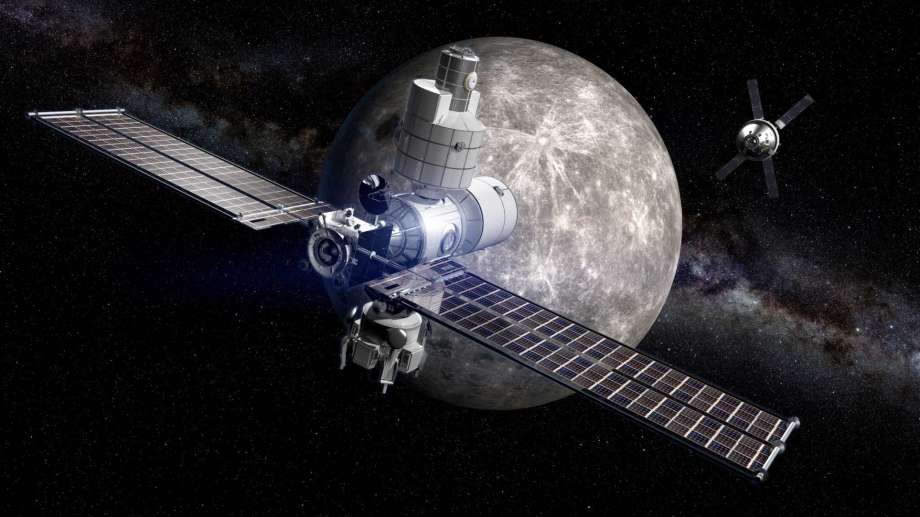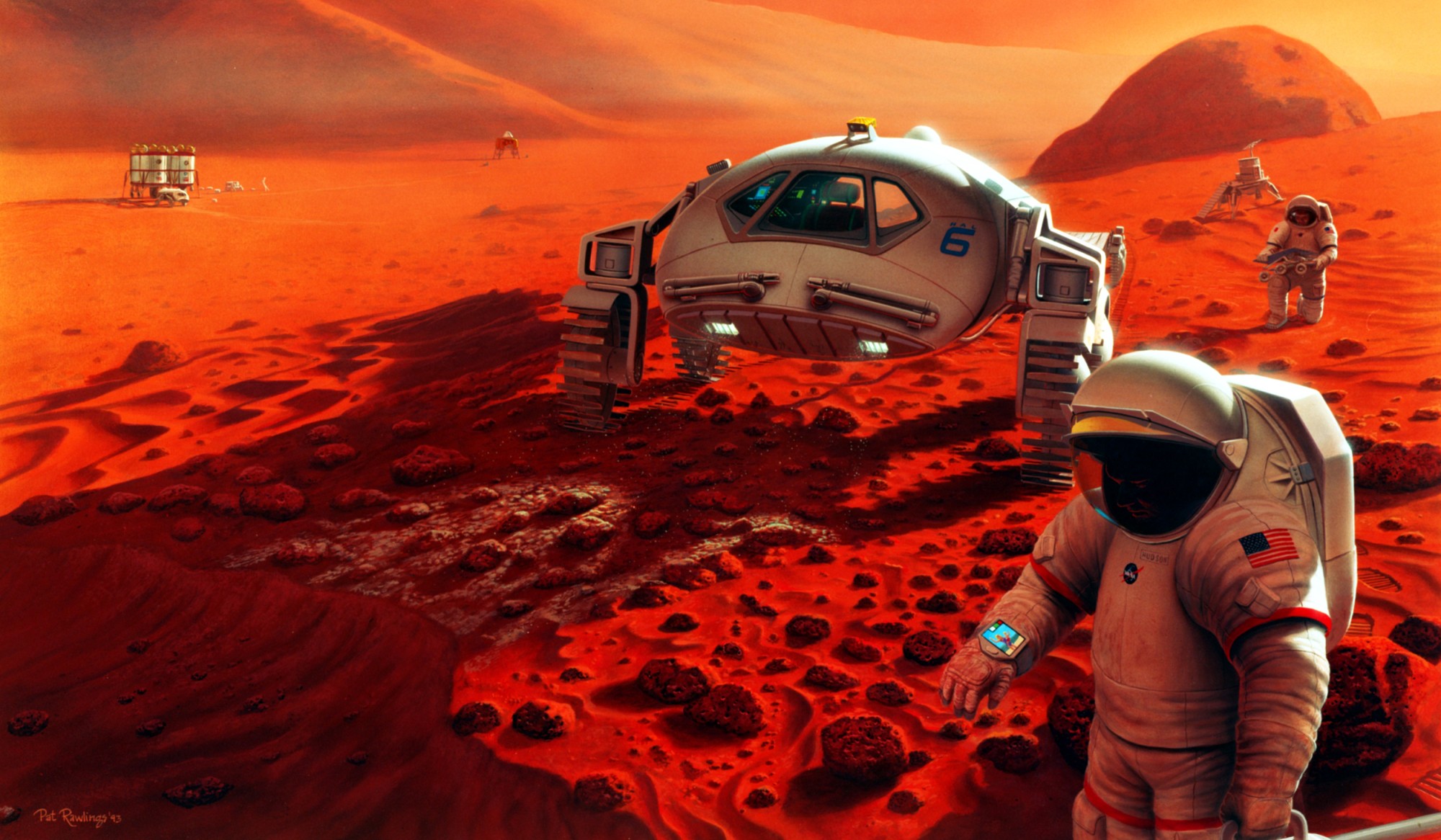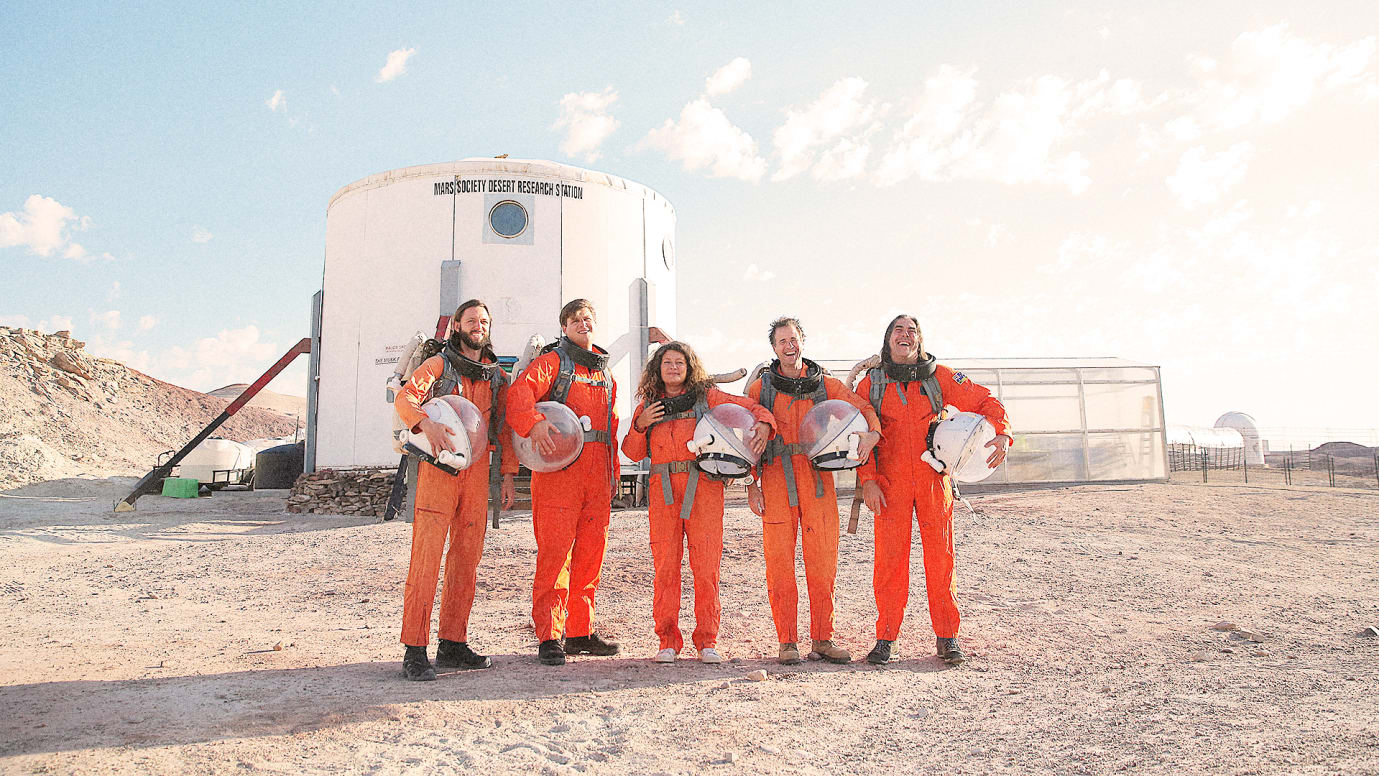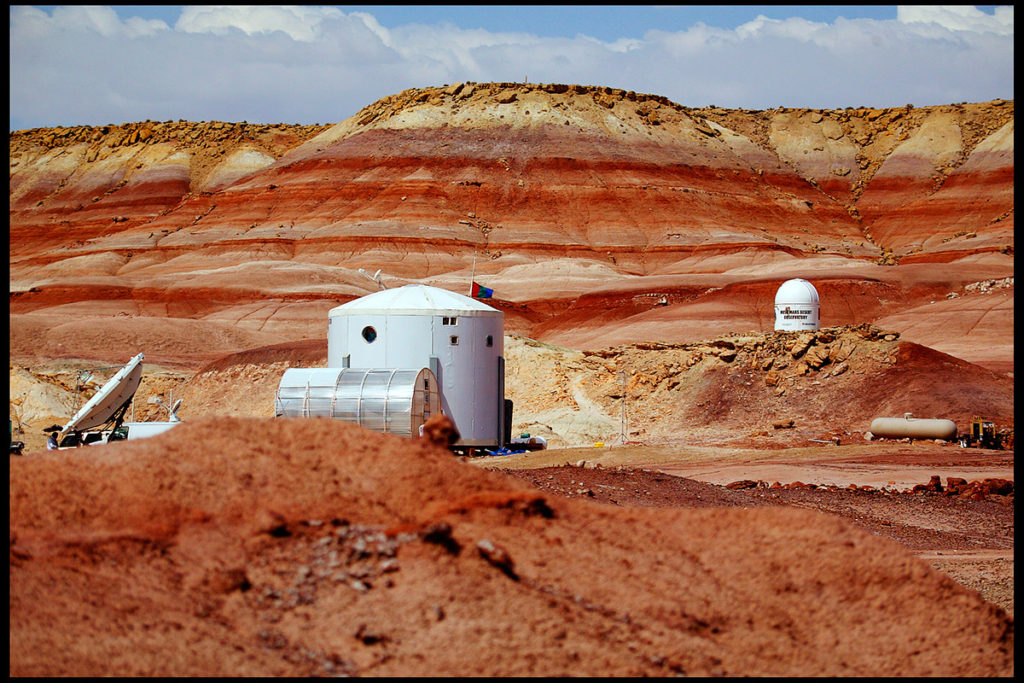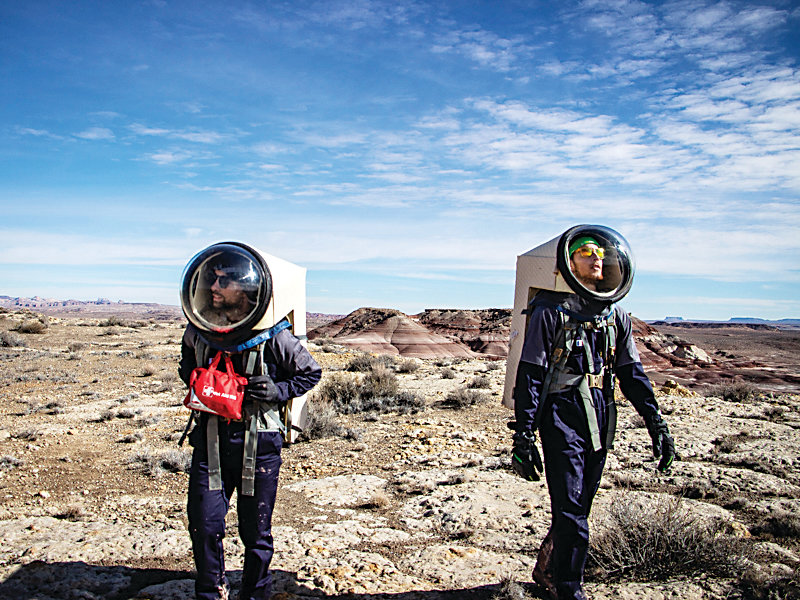
The Mars Society has two practice Mars exploration sites, one of which is in a desert near Hanksville, Utah.
In Robert Zubrin’s Lakewood office hangs a photo he took in 2009 of a space shuttle taking off to repair the Hubble Space Telescope, a mission he strongly advocated for, despite pushback from former NASA Administrator Sean O’Keefe.
Zubrin, an aerospace engineer, sees two versions of the future for humanity. The first is where new worlds are being explored, and even if things can go wrong, there’s an optimistic future of infinite possibilities. The other future is bleak in which the world is crowded and lacks enough resources to go around.
“I want the first version, and Mars is the closest planet that has all the resources needed for life and civilization. If we can go there, that’s the first step in becoming a multi-planet species,” said Zubrin. “They say the Earth is only so big. It isn’t, because it comes with an infinite sky.”
Zubrin co-founded The Mars Society in 1998, a Lakewood based organization that is dedicated to human exploration and settlement on Mars. The organization, which has at least 7,000 members, works on public outreach and educational programs, political advocacy and research.
The Mars Society has two simulated sites that mirror conditions on Mars — one in the Canadian Arctic and the other in a Utah desert. The sites are used for practice Mars missions to further understand the technology and science needed for humans to operate on the planet. Crews of typically six people attempt to conduct a sustained program of field exploration while operating as if they are on Mars. In the Utah location, a crew found a dinosaur bone, something that Zubrin says a robotic rover might have missed.



